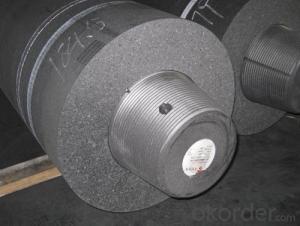Graphite Electrodes in Electrolysis: A Renewed Interest
It’s electrifying, quite literally, to delve into the world of graphite electrodes and their role in electrolysis. This isn’t just a scientific discussion; it’s a journey into the heart of industrial processes that power our modern world. Let’s spark some interest in this often-overlooked hero of the electrochemical world.
The first thing that strikes you about graphite electrodes is their versatility. They’re like the Swiss Army knife of the chemical industry. You need something to conduct electricity? Graphite’s your go-to. Need something that can withstand high temperatures without losing its properties? Graphite’s got your back. And if you’re looking for a material that’s resistant to corrosion and chemical reactions, graphite is the unsung hero.
But what exactly is electrolysis, and why are graphite electrodes so crucial to it? Electrolysis is the process of using an electric current to drive a non-spontaneous chemical reaction. It’s like giving a car a push when it’s out of gas – the electric current is the ‘push’ that helps the reaction move forward. And graphite electrodes are the conduits that channel this energy.
Now, let’s talk about the process in a more relatable way. Imagine you’re baking a cake. You’ve got all your ingredients, but you need to mix them in a specific way to get the perfect texture. That’s where the graphite electrodes come in. They’re like the mixer, ensuring that the electric current is evenly distributed throughout the process, allowing for a uniform and efficient reaction.
One of the most significant applications of graphite electrodes in electrolysis is in the production of aluminum. Aluminum is everywhere – from the cans we drink our sodas from to the airplane parts that keep us flying. And it all starts with a process called the Hall-Héroult process, where graphite electrodes play a pivotal role.
But it’s not just about aluminum. Graphite electrodes are also vital in the production of chlorine and sodium hydroxide, which are essential for everything from cleaning products to paper production. They’re the silent workhorses of the chemical industry, powering the processes that keep our world clean and running smoothly.
As we move towards a more sustainable future, the interest in graphite electrodes has been renewed. With the push for renewable energy sources and the need for efficient energy storage, graphite electrodes are at the forefront of innovation. They’re not just tools in the electrolysis process; they’re the key to unlocking a greener, more efficient world.
And let’s not forget the role of graphite electrodes in the development of fuel cells. These are the power sources of the future, providing clean energy for everything from cars to homes. The efficiency and durability of graphite electrodes make them ideal for these applications, ensuring that we can power our lives without compromising the environment.
But with all this talk about efficiency and sustainability, it’s easy to overlook the human side of the story. The people behind the scenes, working tirelessly to refine the processes and improve the technology. They’re the ones who breathe life into these graphite electrodes, turning them from raw materials into the catalysts for change.
In conclusion, graphite electrodes are more than just a component in electrolysis. They’re the driving force behind some of the most significant industrial processes in the world today. They’re the unsung heroes of the chemical industry, and their renewed interest is a testament to their importance and potential. So next time you pick up a can of soda or admire an airplane flying overhead, take a moment to appreciate the graphite electrodes that made it all possible.

